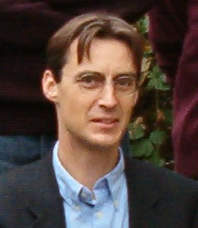| Speaker |
Advisor |
School |
Title |
| Shuchin Aeron |
Venkatesh Saligrama |
Boston University |
Energy efficient policies
for distributed target tracking in multi-hop sensor networks |
| Henri Aguesse |
Hua Wang |
Boston University |
Active
Interaction Graphs in Consensus and Related Cooperative Control Problems |
| Erin Aylward |
Pablo Parrilo |
MIT |
Stability
and Robustness Analysis of Nonlinear Systems via
Contraction Metrics and SOS Programming |
| Michael Belyea |
Kumar Bobba |
U. Massachusetts at Amherst |
Distributed Robust Control of Nonlinear Sine-Gordon PDE |
| Emrah Biyik |
Murat Arcak |
Rensselaer Polytechnic Institute |
Area aggregation and time-scale modeling in sparse nonlinear networks |
| Ming Cao |
Stephen Morse |
Yale University |
Asynchronous agreement in continuous time |
| Svein Hovland |
Karen Willcox |
Norwegian University of Science and Technology / MIT |
Constrained Optimal Control for Large-Scale Systems via Model Reduction |
| Agung Julius |
George Pappas |
U. Pennsylvania |
Approximate
abstraction of stochastic systems |
| Raphaël Jungers |
Vincent Blondel |
U. Catholique Louvain / MIT |
Trackability
of an agent in a sensor network |
| Seong-Cheol Kang |
Yannis Paschalidis |
Boston University |
On
the Benefits of Distributional Information in Robust Linear Optimization |
| Marius Kloetzer |
Calin Belta |
Boston University |
Temporal
Logic Control of Linear Systems |
| Georgios Kotsalis |
Munther Dahleh
Alexandre Megretski |
MIT |
Model reduction for hidden Markov chains |
| Keyong Li |
Raff D'Andrea |
Cornell University |
Layered Optimization in the Trajectory Design of Autonomous Robots |
| Zhiyun Lin |
Mireille Broucke |
U. of Toronto |
An overview of reachability analysis of piecewise linear
affine systems on simplices |
| Jiaping Liu |
Mung Chiang |
Princeton University |
Stochastic stability of optimization-based network resource allocation |
| Jianfeng Mao |
Christos Cassandras |
Boston University |
Optimal Control of Multi-Stage Discrete Event Systems with Real-Time Constraints |
| Nader Motee |
Ali Jadbabaie |
U. Pennsylvania |
Distributed
Receding Horizon Control of Spatially Invariant Systems |
| Derek Paley |
Naomi Leonard |
Princeton University |
Collective Motion of
Self-Propelled Particles: Stabilizing Symmetric Formations on Closed
Curves |
| Raffaele Potami |
Michael Demetriou |
Worcester Polytechnic
Institute |
Scheduling
policies of intelligent sensor/actuator networks in flexible structures |
| Victor Preciado |
George Verghese |
MIT |
Low-Order
Spectral Moments of Random Graphs with Specified Expected Degrees |
| Liming Wang |
Eduardo Sontag |
Rutgers University |
Almost global convergence
in singular perturbations of strongly monotone systems |
| Haidong Yuan |
Navin Khaneja |
Harvard University |
Time
optimal control of spin system with unequal coupling |
![[NEW]](../pics/new.png)
![[NEW]](../pics/new.png)

